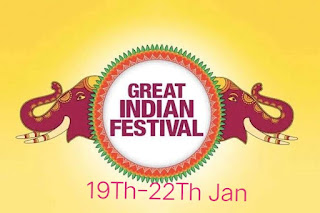Indian Calender in 2021
* Christian Holidays
* Islamic Holidays
January 2021 Festivals
1 Friday New Year
13 Wednesday Lohri
14 Thursday Pongal , Uttarayan , Makar Sankranti
23 Saturday Subhas Chandra Bose Jayanti
26 Tuesday Republic Day
February 2021 Festivals
16 Tuesday Basant Panchmi , Saraswati Puja
Walk 2021 Festivals
11 Thursday Mahashivratri
28 Sunday Holika Dahan
29 Monday Holi
April 2021 Festivals
1 Thursday Bank's Holiday
13 Tuesday Chaitra Navratri , Ugadi , Gudi Padwa
14 Wednesday Baisakhi , Cheti Chand , Ambedkar Jayanti
21 Wednesday Ram Navami
22 Thursday Chaitra Navratri Parana
27 Tuesday Hanuman jayanti
May 2021 Festivals
14 Friday Akshaya Tritiya
July 2021 Festivals
12 Monday Jagannath Rath Yatra
20 Tuesday Ashadhi Ekadashi
24 Saturday Guru Purnima
August 2021 Festivals
11 Wednesday Hariyali Teej
13 Friday Nag Panchami
15 Sunday Independence Day
21 Saturday Onam/Thiruvonam
22 Sunday Raksha Bandhan
25 Wednesday Kajari Teej
30 Monday Janmashtami
September 2021 Festivals
9 Thursday Hartalika Teej
10 Friday Ganesh Chaturthi
19 Sunday Anant Chaturdashi
October 2021 Festivals
2 Saturday Gandhi Jayanti
7 Thursday Sharad Navratri
13 Wednesday Durga Puja Ashtami
14 Thursday Durga Maha Navami Puja
15 Friday Dussehra , Sharad Navratri Parana
24 Sunday Karva Chauth
November 2021 Festivals
2 Tuesday Dhanteras
4 Thursday Diwali , Narak Chaturdashi
5 Friday Govardhan Puja
6 Saturday Bhai Dooj
10 Wednesday Chhath Puja
14 Sunday Children's Day
December 2021 Festivals
25 Saturday Merry Christmas
India is known for its varieties and religions where we appreciate a great deal of celebrations. Leave it alone a Muslim, Sikh, Hindu, or Christian, we praise every single celebration with energy and eagerness. In any case, knowing the specific dates of the equivalent becomes inconvenient now and then. To dispose of it, we have brought Indian Calendar 2021 for you to back out your battle finding accurate dates.
AstroSage presents yearly Indian Calendar 2021. Become acquainted with pretty much all the principle celebrations and all the public authority occasions.
Inception of Indian Calendar
Indian National Calendar, likewise called as Shalivahana Shaka Calendar is comprehensively utilized for news broadcasting purposes close by Gregorian Calendar. After a study directed by Calendar Reform Committee during 1950s, it was reasoned that around 30 unique schedules were being utilized to set Hindu, Buddhist and Jain celebrations.
They found that these schedules depended on comparable standards however set up according to old traditions and cosmic practices. Then again, Islamic schedule was utilized by Muslims in India alongside Indian Government utilizing Gregorian schedule for regulatory purposes. Therefore, because of Calendar Reform 1957 C.E., a formalized and organized lunisolar schedule was settled as the National Calendar of India, where jump years related with those referenced in Gregorian schedule.
Notwithstanding various endeavors to make a bound together stage, there still exists a few nearby varieties. Government actually utilizes Gregorian schedule for authoritative purposes and occasions are seen according to local, ethnic and strict convictions and conventions.
On a moral front, crystal gazers use Panchang or Panchangam (Hindu Calendar dependent on Lunar Calendar) to fix the marriage date and give promising muhurat after horoscope coordinating is finished.
Structure of Indian Calendar
The Shaka Calendar depends on the luni-nearby planetary group according to time, and comprises of a year and 365 days. The principal month in Indian Calendar is Chaitra and the latter is Phalguna. The names of the months according to Shaka Calendar are as per the following:
1. Chaitra
2. Vaishakha
3. Jyeshtha
4. Ashadha
5. Shravana
6. Bhadra
7. Ashwin
8. Kartika
9. Agrahayana
10. Pausha
11. Magha
12. Phalguna
The National Calendar is a high level alteration of Indian Solar Calendars actually existing in the areas. The standard unit remains the common day and period is Saka time. It is organized in order to relate with the Tropical or Sayana year and not customary Sidereal or Nirayana year.
Strict occasions depend on lunisolar schedule which recognizes explicit places of Moon and Sun. Dominant part of celebrations and occasions happen on a referenced lunar tithi (date) while others on sun powered tithis.
Lunar Calendar is seen as the principle component while giving forecasts in Vedic Astrology or ascertaining muhurat, celebrations, etc, planet Sun has its own hugeness. A Solar Calendar portrays the obvious situation of planet Sun known to man. One such model is Gregorian Calendar, which is utilized globally and considered the standard instrument. In crystal gazing, a sunlight based month portrays the situation of Sun's longitude to increment during the span by 30 degree relating to its entry through a zodiac sign.










